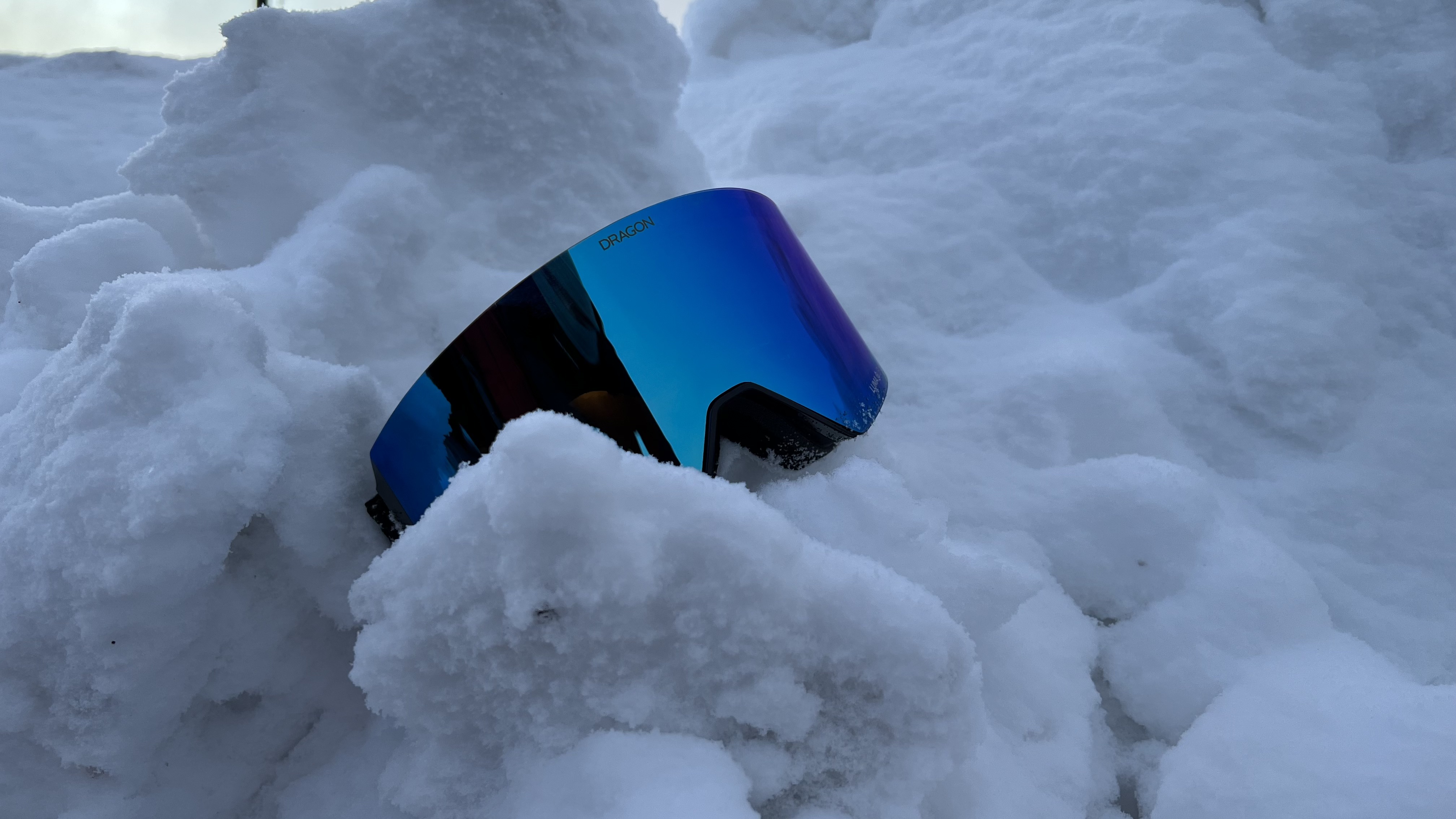
A lot of the focus on snowboarding goggles (or skiing goggles, no judgment here, two-plankers) centers on style. People seem keen to find big, lens-only styles that create a particular look on the mountain. We get it — you want to look cool — but functionality still matters most. The Dragon RVX Mag OTG delivers on both, likely better than the goggles you already own, and ranks among our favorite snowboarding gear for 2023.
The RVX Mag OTG comes in various colors and band styles with an almost pure-lens front fascia. Face-forward, all anyone will see besides the lens is a small nose bridge. The construction of these goggles is familiar: foam padding where the frames sit on your face, an adjustable elastic-y band, and vents all the way around the frame. Dragon didn’t re-iMagine how goggles are made, but it did tinker with how they perform.
Dragon RVX Mag OTG goggles come with a bonus lens, allowing you to swap the big ‘ol lens out to suit your needs. Dragon doesn’t tell you that the “bonus” lens is better for low-light scenarios. This is our one true gripe with Dragon here: the company does a poor job of giving users insight into what conditions the lenses are best for. Your primary lens will be mirrored, while the bonus lens has a lot more pass-through to allow more light into your view. I’d like to see Dragon inform users about its lens technology, so they actively swap lenses as needed rather than let one lens sit on the shelf because it doesn’t look as “cool” as the other.
I gave the Dragon RVX Mag OTG a full day on a tumultuous day in the Pacific Northwest. I went to my home mountain, Timberline Lodge, on a day that was dim and dumping snow. Anyone who rides in the PNW knows light conditions can change quickly, making the Dragon RVX Mag OTG perfect for this geography. I parked close to a lift (and the lodge), allowing me to swap lenses easily between runs when conditions required that I have more light in my field of view.
Swapping lenses on the Dragon RVX Mag OTG is simple – once you get the hang of it. A small lever on the underside of the frame unlocks the goggles, and you pull the lens away from your face to release it from its Magnetic home. Simply center the other lens on the frame, and the Magnets take hold. Lock the lever back into place and get riding.
It’s crucial to note that swapping lenses without wearing the Dragon RVX Mag OTG is likely a no-go. The Magnets are strong enough to make it cumbersome for in-hand lens swapping rather than swapping lenses while the frame is on your face, and the durable lever is something I found was easier to manipulate while wearing the goggles.
On the mountain, the Dragon RVX Mag OTG goggles are sensational. No fogging (Dragon claims the RVX Mag OTG goggles have the “toughest anti-fog on the market”) in any weather condition, which is impressive. They stayed on my helmet, even when I took a tumble, thanks to the silicon backing on the strap. And they look great – yes, full-lens looks are important to me, too.
Dragon RVX Mag OTG goggles are also competitively priced for premium goggles at $270. They only have one size – medium – which seems suitable for various head sizes and face shapes.
Should you buy the Dragon RVX Mag OTG? Yes. Give the lens swap a dry run at home before hitting the mountain, and remember which conditions the lenses are best suited for so you can swap at the right time, as needed. But even if you don’t swap as often as I might, the Dragon RVX MAG OTG are sensational goggles that will be strapped to my face often this winter.



